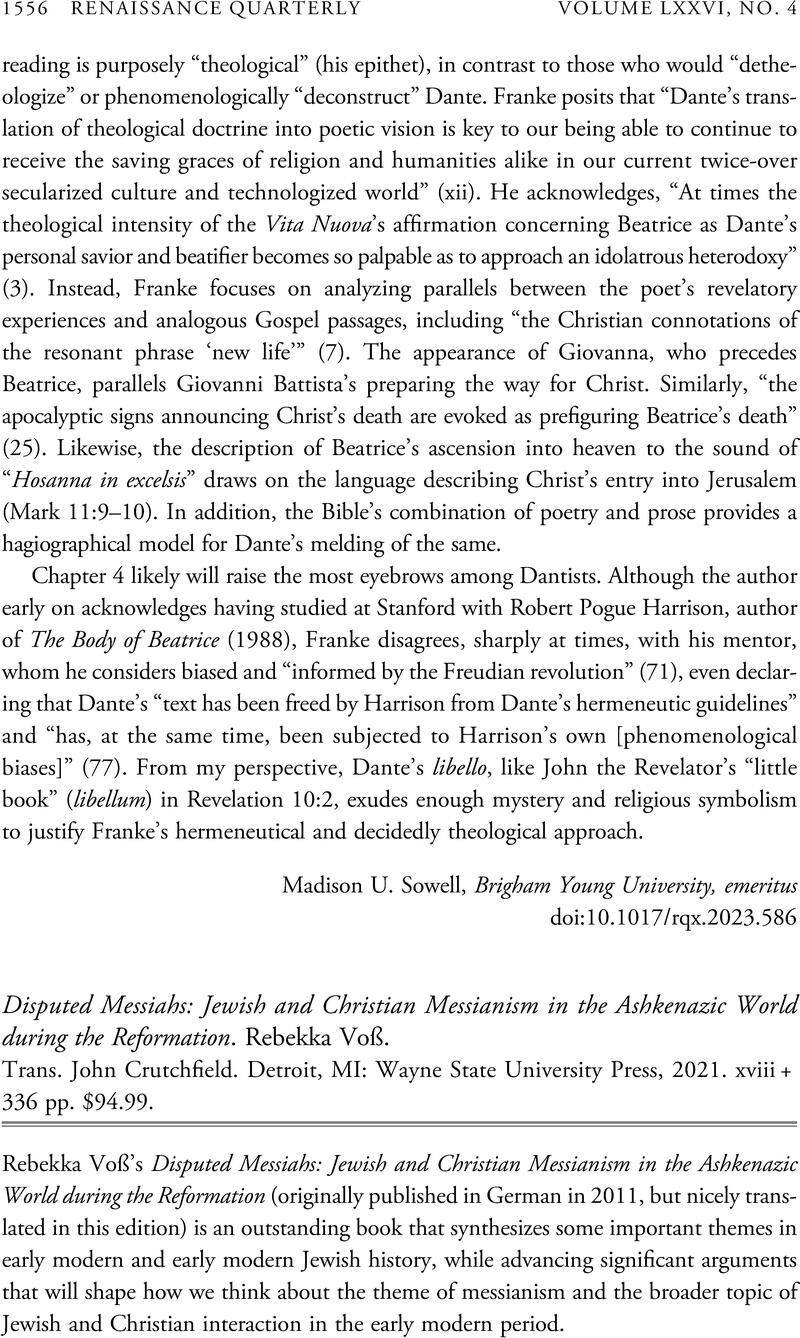No CrossRef data available.
Article contents
Disputed Messiahs: Jewish and Christian Messianism in the Ashkenazic World during the Reformation. Rebekka Voß. Trans. John Crutchfield. Detroit, MI: Wayne State University Press, 2021. xviii + 336 pp. $94.99.
Review products
Disputed Messiahs: Jewish and Christian Messianism in the Ashkenazic World during the Reformation. Rebekka Voß. Trans. John Crutchfield. Detroit, MI: Wayne State University Press, 2021. xviii + 336 pp. $94.99.
Published online by Cambridge University Press: 24 January 2024
Abstract
An abstract is not available for this content so a preview has been provided. Please use the Get access link above for information on how to access this content.

- Type
- Review
- Information
- Copyright
- Copyright © The Author(s), 2024. Published by Cambridge University Press on behalf of the Renaissance Society of America



